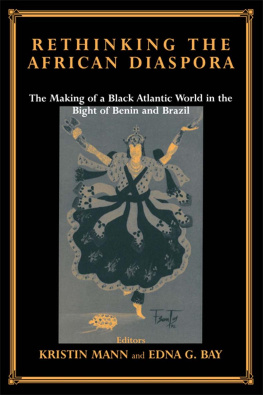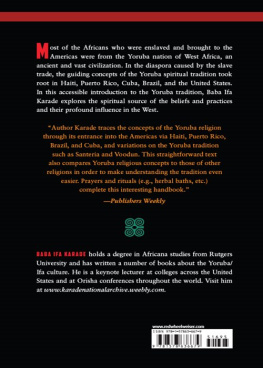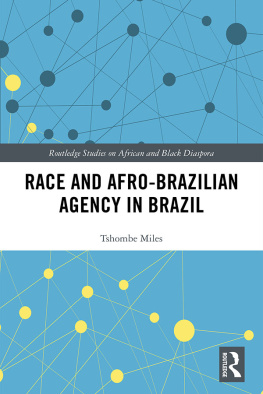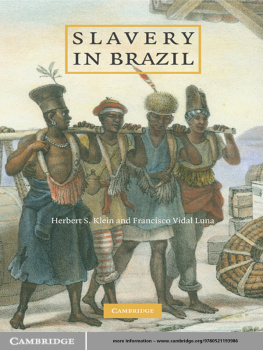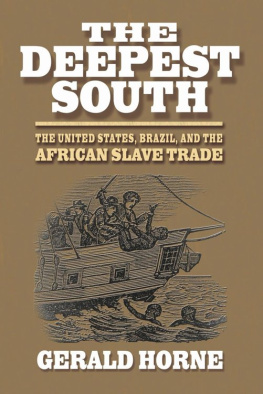THE FORMATION OF CANDOMBL
A BOOK IN THE SERIES
Latin America in Translation/en Traduccin/em Traduo
Sponsored by the Consortium in Latin American Studies at the
University of North Carolina at Chapel Hill and Duke University
Translation of the books in the series Latin America in Translation / en Traduccin / em Traduo, a collaboration between the Consortium in Latin American Studies at the University of North Carolina at Chapel Hill and Duke University and the university presses of the University of North Carolina and Duke, is supported by a grant from the Andrew W. Mellon Foundation.
2013 The University of North Carolina Press
All rights reserved
Designed by and set in Arno Pro and Calluna Sans types by Rebecca Evans
Manufactured in the United States of America
Originally published in Portuguese as A formao do Candombl: Histria e ritual da nao jeje na Bahia (Campinas: Editora da Unicamp, 2006), 2006 Luis Nicolau Pars and 2006 by Editora da Unicamp.
The paper in this book meets the guidelines for permanence and durability of the Committee on Production Guidelines for Book Longevity of the Council on Library Resources. The University of North Carolina Press has been a member of the Green Press Initiative since 2003.
Library of Congress Cataloging-in-Publication Data
Pars, Luis Nicolau, author.
[Formao do Candombl. English]
The formation of Candombl : Vodun history and ritual in Brazil / Luis Nicolau Pars; translated by Richard Vernon in collaboration with the author.
pages cm.(Latin America in translation / en traduccin / em traduo)
Originally published in Portuguese in Campinas by Editora da Unicamp as A formao do Candombl: Histria e ritual da nao jeje na Bahia, 2006.
Includes bibliographical references and index.
ISBN 978-0-8078-3311-7 (cloth : alk. paper)
ISBN 978-1-4696-1092-4 (pbk. : alk. paper)
1. Candombl (Religion)BrazilBahia (State) 2. BlacksBrazilBahia (State)Ethnic identity. 3. BlacksBrazilBahia (State)History. 4. BlacksBrazilBahia (State)Religion. 5. Bahia (Brazil : State)Religious life and customs.
I. Title. II. Series: Latin America in translation/en traduccin/em traduo.
BL2592.C35P3713, 2013 299.673098142dc23 2013020448
17 16 15 14 13 5 4 3 2 1
IN MEMORIAM
VICENTE PAULO DOS SANTOS
Contents
1 Between Two Coasts
Nations, Ethnicities, Ports, and the Slave Trade
3 FromCalunduto Candombl
The Formative Process of Afro-Brazilian Religion
5 Bogum and Roa de Cima
The Parallel History of Two Jeje Terreiros in the Second Half of the Nineteenth Century
8 The Ritual
Characteristics of the Jeje-Mahi Liturgy in Bahia
Figures, Illustrations, Maps, and Tables
FIGURE
- Jeje-Nag and Mundubi-Mahi aggregation processes within the Jeje-Mahi Terreiros
ILLUSTRATIONS
- In the Rio Vermelho region
- Warehouses in the city of Cachoeira
- Pejig Seu Miguel
- Maria Epifania dos Santos, Sinh Abalhe
- Ambrsio Bispo Conceio, Og Boboso
- Bernardino Ferreira dos Santos, pejig of Seja Hund
- Maria Emiliana da Piedade
- Luiza Franquelina da Rocha, Gaiaku Luiza
- Maria Romana Moreira, Romaninha de P
- Vicente Paulo dos Santos, Humbono Vicente
- Valentina Maria dos Anjos, Don Runh
- Runhs Sirrum: Me Nicinha
- Evangelista dos Anjos Costa, Don Gamo Lokosi
- The visit of Hunon Dagbo to Bogum
- Sideview of the Bogum terreiro before the restoration of the roof
- Manuel Falef
MAPS
- The Gbe-speaking area and its principal ethnic groups
- Migrations of the Adja
- The Gbe-speaking area and its glossonyms
- The Mahi country
- The site of the Bogum terreiro
TABLES
- Ethnoracial Composition of the Slave Population in the Tobacco-Producing Area of Cachoeria (16981820)
- Ethnoracial Composition of the Slave Population in the Sugar-Producing Areas of So Francisco do Conde and Santo Amaro da Purificao 17501820
- Ethnoracial Composition of the Slave Population, Salvador, 17021850
- Ethnoracial Composition of Freed Persons, Salvador, 17991850
- Seja Hund Leadership
- Bogum Leadership
- Statistics of Jeje Terreiros in Salvador
- Basic Structure of the Ritual Cycle in the Jeje-Mahi Terreiros of Cachoeira
Preface
The result of more than seven years of research, this book aims to recover the historical memory of a group that is largely forgotten, both within Afro-Brazilian studies and among Candombl practitioners. The prestige of the Jeje nation within Candombl is still recognized among religious experts, and scholars do refer occasionally to certain aspects of its ritual practice. However, no book to date has been dedicated to an in-depth and detailed study of this root of Afro-Brazilian culture.
This work also encompasses both the history and the anthropology of Afro-Brazilian religion. This interdisciplinary approach embraces, therefore, a number of diverse yet internally intertwined themes, including among others the construction of Jeje ethnicity in colonial Brazil, the contribution of the vodun* cults to the formative process of Candombl, the microhistory of two Jeje terreiros,* and a selective ethnography of the vodun pantheon and ritual practice in contemporary Bahia.
Another significant aspect of this study is its complementary use of both oral and written sources, in combination with an analysis of ritual behavior. Although this is not an entirely new methodology, the interface between history and ethnography has been little used in Afro-Brazilian studies. The critical intersection of these varied sources proved to be quite fertile and opened interpretative paths that would have been impossible if I had worked with only one kind of source. This exercise was especially relevant in the reconstruction of the histories of the Bogum terreiro in Salvador and Seja Hund in Cachoeira, in the Bahian Recncavo,* both founded by Jeje Africans during the time of slavery.
The framework of this studys subject responds to linguistic criteria. One could say that the book deals with the historiography of two words: Jeje and vodunthe first having primarily an ethnic meaning and the second a religious one. These two words guided and determined the documentary research, as well as the selection of the two terreiros where the field research was conducted, given that these congregations define themselves as belonging to the Jeje nation and are distinguished from other nations through their worship of certain deities called voduns.
To define the African geographic area where the ethnic groups known in Brazil as Jeje originated (the topic of chapter 1), I also employed essentially It is precisely among these peoples sharing linguistic roots since ancient times that the term vodun is used to designate the deities or invisible forces of the spirit world.
The demarcation of a geographic area based on linguistic criteria results from a descriptive and analytic need, but it is important to point out that the Gbe-speaking area was always a multicultural and polyethnic society, in which the mercantile system, wars, and the slave trade contributed to populations movements from one area to another, which in turn contributed to this diversity. Cities such as Ouidah and Abomey were relatively cosmopolitan centers, in some ways comparable to the urban centers of colonial Brazil, where the same encounters of culturally diverse human groups occurred, again with economic motives connected to the slave trade. This structural similarity suggests that the collective identity dynamics of minority groups, as well as strategies of assimilation and resistance in relation to dominant groups, could have been reproduced in a similar manner both in Bahia and in the Gbe-speaking area.


